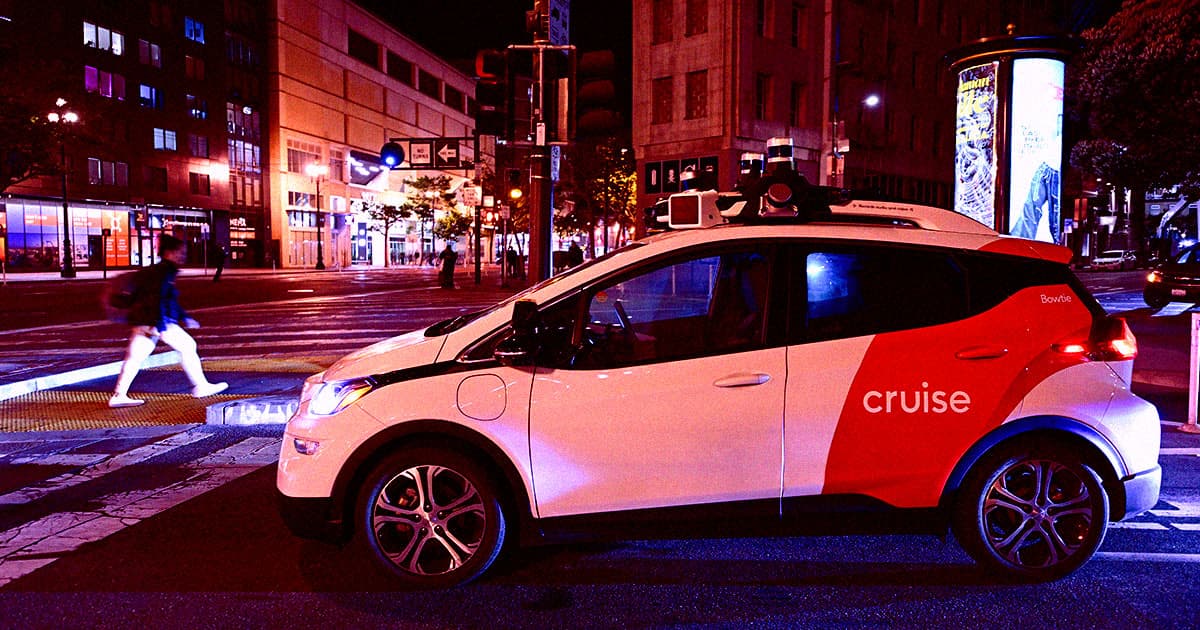A huge setback.
Put On Hold
Cruise, General Motors' autonomous vehicle division, announced on Thursday that it's "proactively" pausing driverless operations of its entire fleet across the United States, just days after California yanked its robotaxi permit due to safety concerns.
"The most important thing for us right now is to take steps to rebuild public trust," Cruise said in a statement on X, formerly Twitter.
"Part of this involves taking a hard look inwards and at how we do work at Cruise, even if it means doing things that are uncomfortable or difficult."
It's a huge setback. With a dramatic decision like this, though, Cruise is looking like a company in crisis, as it struggles to get on the good side of regulators, regularly becomes involved in traffic blunders, and continues to bleed billions of dollars.
And this is bigger than just GM. As a standard bearer of self-driving tech among the Big Three automakers, Cruise's hamstrung efforts show that the future of autonomous cars, let alone robotaxis, is anything but certain.
Center of Attention
Last week, the National Highway Traffic Safety Administration (NHTSA) announced it was opening an investigation into Cruise, after receiving reports of its robotaxis endangering and injuring pedestrians.
One high-profile incident involved a woman becoming trapped under a Cruise vehicle after being struck by a human driver in a hit-and-run. Some of the facts are disputed, but it appears the pedestrian was flung into the path of the robotaxi, which ran her over after it was unable — or failed to — brake or swerve in time.
This landed Cruise in hot water with the California Department of Motor Vehicles. A week after the NHTSA investigation was announced, the state regulator suspended the company's robotaxi permit, citing that the "vehicles are not safe for the public's operation." The DMV also claimed Cruise withheld critical footage related to the hit-and-run incident.
For its part, Cruise maintains that its pause "isn't related to any new on-road incidents," — a bizarre claim, given the number of well-documented cases.
"We think it's the right thing to do during a period when we need to be extra vigilant when it comes to risk, relentlessly focused on safety, and taking steps to rebuild public trust," it said in its statement.
Money Pit
Cruise has been an extremely costly venture for GM. On Tuesday, the automaker said it lost $1.9 billion on Cruise between January and September of this year alone. A federal investigation and an emergency pause aren't likely to help the situation.
Before the pause, its robotaxis operated in only a handful of cities, including San Francisco, Phoenix, Austin, and Miami. Plans were in the works to expand to more locations like Seattle and Washington DC.
For now, Cruise says it will continue to offer supervised autonomous vehicle services. How long the pause will last, however, remains to be seen.
More on advanced transport: Tesla Admits the DOJ Is Investigating Its Vehicles' Driving Range
Share This Article
